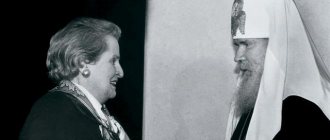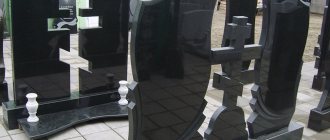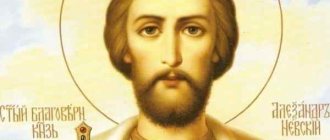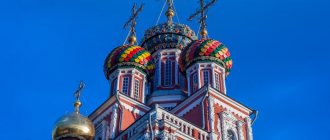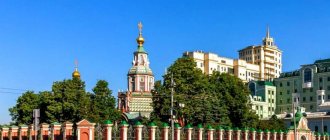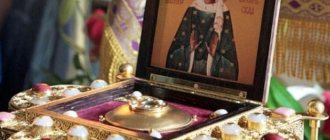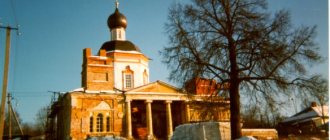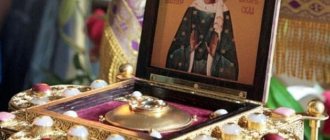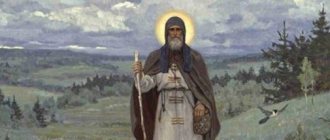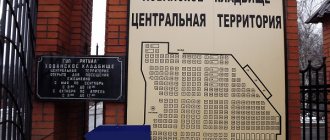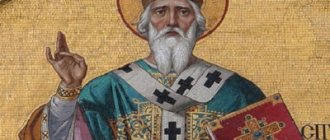The President of Russia has repeatedly stated that it is necessary to rewrite the country's history so that it meets modern realities and challenges. This process occurs due to inventing something that never happened, mythologizing, twisting facts, which was the sin of Soviet historians, and now their “mistakes” are being repeated by Russian scientists. A striking example of creating a story that is far from reality was the installation of a monument to Vladimir the Great in Moscow in 2016.
Choosing a site for the monument to Prince Vladimir on Borovitskaya Square
This is one of the youngest Moscow monuments on a historical theme. It was opened on November 4 last year not far from the heart of the capital - the Kremlin, near the historical Manege building - on Borovitskaya Square. The location for the monument was not immediately determined: the huge size of the sculpture - 24 meters - suggested a significant territory, on a large scale, so that it could be visible from afar. It was with the choice of location that the history of the monument to Vladimir the Great began. Initially, an observation deck on the Sparrow Hills was planned for it, but the public opposed this: only the back of the Prince of Kyiv would be visible from the university. To view the entire monument, it was necessary to stand on the opposite bank of the Moscow River, towards which it was facing. Whether there was one reason or another, the experts did not agree with the original plan. Long debates and discussions ended with a unanimous decision - to install the figure of Vladimir, Prince of Kyiv, reducing its size to 18 meters, in the very center of Moscow, exactly in its original location - not far from Borovitsky Hill. And the sculpture will be visible there from all sides.
To the 1000th anniversary of his death
The idea to erect a monument arose in 2015. That year marked 1000 years since the death of Prince Igor, and the decision to create the monument was marked by the installation of a foundation stone, consecrated by Patriarch Kirill.
The choice of location caused a lot of political and ideological controversy and was carried out by SMS voting through the Active Citizen mobile application. Of the options offered to Muscovites (Borovitsky Hill, Vorobyovy Gory, Lubyanskaya Square), the first one won. Fears that the appearance of the monument in the Kremlin’s protected zone threatens to exclude it from the list of sites under the patronage of UNESCO have not been confirmed. The reports on the construction of the monument sent to this international organization fully satisfied its leadership.
Vorobyovy Gory as a possible location for the monument was not suitable from the point of view of the law. The fact is that this natural reserve has the status of specially protected areas, where any construction work that is not directly related to the reserve is prohibited.
Before the opening of the monument
The author of the monument to Prince Vladimir the Great, seventeen meters high, was Salvat Shcherbakov. And the idea was expressed back in 2014 by the Military Historical Society of Russia.
A lot of time was spent on creating the monument, and a lot of bronze was also used - as much as 25 tons. The author himself at the opening of the sculpture said that the work on the image was based on the masterpieces of the famous Russian artist Viktor Vasnetsov - paintings of the Vladimir Cathedral in Kyiv, sculptures of the 19th century, as well as the faces of St. Vladimir, embodied in cult works by domestic icon painters. The history of the monument to Prince Vladimir on Borovitskaya Square is connected with interesting facts. Almost a month was spent delivering the monument to the installation site, and the opening ceremony was timed to coincide with an important national holiday - National Unity Day. Welding and installation of the sculpture lasted several days. During the installation process, a 500-ton crane and a huge welded metal container structure were used, in which the bronze sculpture was transported to Borovitsky Hill.
Monument to the saint, warrior and politician
The monument on Borovitsky Hill is a bronze sculpture on a granite pedestal. The total height is 17 m; Initially, the figure of the prince was supposed to be taller, but the project was revised downward to avoid resemblance to the monument to Peter I on the Crimean embankment. The authors of the project, I. Voznesensky and S. Shcherbakov, became winners of the project competition, which were determined by secret ballot by members of the commission led by Bishop Tikhon. They made every effort to ensure that the warrior prince turned out to be a courageous, self-confident ruler.
The sculptor involved ten sitters to work on the figure of the prince, from which he created the angles and pose of the warrior. Bas-reliefs in the form of sculptural paintings tell the story of the exploits of Prince Igor and the baptism of Rus'. They were made based on the painting by the artist Vasnetsov of the walls and ceilings of the Vladimir Cathedral.
Negative character
Prince Vladimir Krasno Solnyshko is the son of the Kyiv prince Svyatoslav Igorevich from the Rurik family and the daughter of the Drevlyan prince Malusha. He was born far from the capital city, but was soon reclaimed by Princess Olga and returned to his father’s homeland. He was the heir of Novgorod, which Svyatoslav gave him ownership before his disastrous campaign. The first period of growing up in the reign of Vladimir was barbaric and bloody: the insidious and bloody murder of Yaropolk’s brother and the father and brothers of his wife Rogneda, complete violence against Rogneda for the sake of a forced marriage, the forcible taking of the murdered Yaropolk’s pregnant wife—a former Greek nun—as a concubine, and other atrocities .
And in religion, Vladimir was initially not only an ardent pagan. It is assumed that he actively used bloody human sacrifices to idols and gods.
Children's Hospital of St. Vladimir
Children's Hospital of St. Vladimir
In 1872, the famous industrialist Pavel Grigorievich von Derviz addressed the Moscow Governor-General with a letter with the following content: “I spent the best years of my public activity in Moscow. Therefore, exclusively there, and with nothing other than the establishment of an exemplary Children's Hospital, I would like to honor the memory of all the older children [Vladimir (1854-1855) and Andrei (1868-1869)] who I lost in Russia. I allocate a capital of four hundred thousand for this charitable cause.”
The hospital that was built became truly exemplary; von Derviz donated a considerable amount to leave 100 beds for orphans and children from poor families. His initiative continued to develop in the 20th century, however, the Soviet government violated the obligatory condition of its builder and renamed the hospital, depriving it of the name of Saint Prince Vladimir. Justice was restored only in 1991. And in 1995, the temple was consecrated under her.
On the way to correction
The feeling of guilt for the murder of his brother and the fate of Rogneda, who was almost mad with grief, nicknamed Gorislava, over time began to torment Vadimir Svyatoslavich more and more. Prayers and sacrifices to pagan gods and idols did not ease the experience. Gradually, the prince began to understand that they were powerless to alleviate his moral suffering. Vladimir came to the idea that it was necessary to find the right faith. This was also facilitated by the difficulties in uniting the tribes of Ancient Rus' into a single state based on the old faith, since each tribe had its own faith, its own gods were the only true ones. Vladimir sent ambassadors to different countries to get acquainted with other religions. The faith chosen at the council was Greek Orthodox. However, for its acceptance and inheritance, reconciliation with the old enemy of Rus' - Byzantium was necessary. Vladimir asked the rulers of Constantinople, Constantine and Vasily, not only for baptism, but also for the hand of their sister Anna. To avoid refusal, Vladimir Svyatoslavich captured the Greek city of Chersonesus and, in case of refusal, threatened to capture Constantinople. Konstantin and Vasily obeyed and persuaded the submissive Anna to marry the Russian prince. Anna's meeting with Vladimir took place in Chersonesos.
Vladimir and the Baptism of Rus'
At that time, the Kiev prince was sick with a strange eye disease, from which doctors could not save him. Anna insisted on urgent baptism. During the ceremony, Vladimir’s illness was miraculously healed. From that moment on, other Russians began to be baptized into the new faith. And upon the arrival of the newlyweds in Kyiv, by decree of Prince Vladimir, all idols were thrown into the Dnieper, and the majority of the city’s population was baptized in the waters of the river. The prince himself refused polygamy, leaving his only wife near him - Anna.
“Monuments to the prince - the baptist of Rus' were erected even in Australia and Argentina”
Moscow has decided on the location for the monument to Saint Prince Vladimir. But where else is the baptist of Rus' immortalized? Our interlocutor is a person who knows absolutely everything about monuments to Vladimir: Galina Ananyina, author of the forthcoming book “St. Equal-to-the-Apostles Prince Vladimir in Monumental Art.”
Moscow, Borovitskaya Square: Galina Ananyina at the place where the Baptist of Rus' will be immortalized. Photo: Olesya Kurpyaeva / RG
— Galina Vasilievna, the emotional discussion about the location of the monument to Prince Vladimir Svyatoslavich in Moscow was completed ahead of schedule. We decided on the place. But the passions are unlikely to subside: they argued not only about where to place the sculpture. There were people who asked - why erect a monument to the prince in a city where he had never been?
“I am convinced that passions flared up from a lack of knowledge.” Saint Vladimir did not visit Moscow? But actually, he died of illness in his residence near Kiev in the summer of 1015. And the first chronicle mention of Moscow dates back to the spring of 1147.
I’ll ask a counter question: has Saint Prince Vladimir ever been to Buenos Aires? And in London? In Toronto? Or, say, in Brisbane? But in Argentina, Great Britain, Canada and Australia he is immortalized in granite and bronze.
The holy prince never visited Poland, but this year a monument to him was unveiled in Gdansk. In addition, guided by this logic, one can ask: why is the Baptist of Rus' valuable to Catholic Rome? But nevertheless, a month ago, on October 11, the monument to Prince Vladimir in the Roman Hagia Sophia was consecrated.
— The very fact of erecting a monument to Prince Vladimir in Rome is encouraging. But one nuance: on the monument, Prince Vladimir is called “the baptist of Rus'-Ukraine.” In fact, during his lifetime there was only Kievan Rus. In 988, he chose Orthodoxy as the religion for the Old Russian state, was baptized himself, taking the Christian name Vasily, and baptized the people. Calling him the baptist of Ukraine is the same as saying: he is the baptist of the Russian Federation. Yes, under him there was no division into Rus' and Ukraine! Why change history?
— Again, all due to the lack of historical knowledge. Or simply from a lack of understanding of history. Do you know where the world's first monument to Saint Prince Vladimir was erected? In Kyiv. It is called differently - a monument to Magdeburg Law, the Baptism of Rus'. Erected on the spot where Vladimir's sons were baptized. First, a chapel was erected there, and in 1802-1808 a column was erected above the chapel in honor of Saint Prince Vladimir and Emperor Alexander I, who, by his decree, granted Kyiv the status of a city with the right to partial self-government.
So it is engraved in stone: “To St. Vladimir, the Enlightener of Russia.” The people of Kiev unconditionally identified themselves with Russia. Note to contemporaries.
— Has this board survived to this day?
“Everything has been preserved, and I pray that the current generation of Slavs will have the intelligence and dignity to respect history. Those who doubt can come to the monument and make sure. The plaque is on the so-called lower monument to St. Vladimir, this is one of the oldest monuments in the capital of Ukraine. It was built at the expense of the Kyiv magistrate and citizens. Architect - Andrey Melensky. Outstanding Kyiv architect, celebrity. His portrait was painted by Taras Shevchenko.
And also pay attention - on this monument citizens wrote words of gratitude not only to Prince Vladimir, but also to Emperor Alexander I. There is also a sacred connection. As you know, Prince Vladimir was baptized in Korsun, this is present-day Chersonesus, a region of Sevastopol. Now Vladimir Cathedral stands on this site. Another cathedral of similar architecture is in the center of Sevastopol; it is better known as the “tomb of the admirals.”
An amazing story is connected with the name of Alexander I. In 1825, the emperor met with Admiral Alexei Greig, and the latter proposed to perpetuate the place of the prince’s baptism.
Who is Alexey Greig? The son of the famous Scottish naval officer Samuel Greig, who transferred to Russian service from the English fleet.
A participant in all the naval battles of that time, Alexey Greig became the main commander of the fleet and ports of the Black Sea - this is how the position of commander of the Black Sea Fleet sounded at that time.
The fleet was actually being created, and for this purpose Admiral Greig was put in this position. He copes with his mission brilliantly, but at the same time he is also engaged in archaeological excavations in the area of the baptism site of Prince Vladimir. It is quite obvious that it took considerable courage to report to the emperor on matters not directly related to the fleet.
Under another emperor, the admiral’s career could have ended immediately: “I ordered you to build a fleet, not monuments!” But not under Alexander I!
“And this despite the fact that Admiral Greig is a Scot by blood and a Lutheran by faith.”
— And also a great patriot of Russia, who understood the importance of Orthodoxy for the Russian Empire. A bright personality, a man of national stature, of which there are few. Initially, he planned to build a church or obelisk in honor of the Baptist of Rus'. But when they started collecting donations for construction, it turned out that there was enough money for more. We decided to build temples. Greig's successor, the famous admiral Mikhail Petrovich Lazarev, continued the work of erecting the Vladimir cathedrals.
Emperor Alexander I, having actually blessed the great project, soon died. December 1 will mark 190 years since the death of this great man, many of whose deeds have been unfairly forgotten. Does everyone know that it was he who laid down the principles of the European community? On his initiative, a new world order was established. In order to avoid wars similar to those waged by Napoleon, he put forward the idea of creating a collective security agreement, the guarantor of which was the Holy Alliance with the leading role of Russia.
The modern European Union became possible thanks to the personal efforts of the Russian Emperor. If the principles of European security had not been laid down at the beginning of the 19th century, would the EU have emerged at the end of the 20th century?
Or the famous Vienna Balls - they are held both in Vienna and Moscow. But this tradition comes from the Congress of Vienna, where Alexander I shone. The idea is that the winners triumph and dance.
— Galina Vasilyevna, after Kyiv, in what other cities in the 19th century were monuments to Prince Vladimir erected?
— In the Kazan Cathedral in St. Petersburg. His image is also depicted on the monument to the 1000th anniversary of Rus' in Veliky Novgorod. The monument is very famous, epoch-making. But not everyone knows that there are 128 figures in total on this monument and two of them are figures of Prince Vladimir. In the middle tier is the composition “The Baptism of Rus'”: Vladimir Svyatoslavich stands with an eight-pointed cross raised upward, a woman hands him a child. And in the composition “Enlighteners” he is in good company: among Cyril and Methodius, Grand Duchess Olga of Kyiv.
In 1883, on the Cathedral of Christ the Savior there was a high relief of the holy prince at the gate. The high relief was destroyed during the explosion of the temple and recreated in 1999.
At the first Armory in the Moscow Kremlin, which was built by decree of Alexander I, in the upper sculptural row there was a huge bas-relief: “The choice of faith by Prince Saint Vladimir.” But apart from the drawings, nothing has survived. Unfortunately.
— 2015 is the 1000th anniversary of the death of Prince Vladimir. Therefore, a lot of monuments are being discovered. With whose money and on whose initiative?
— Let me clarify: the parade of installation of monuments to the prince does not begin in 2015. In 1988, on the occasion of the 1000th anniversary of the baptism of Rus', monuments were opened in Buenos Aires, London, Toronto and Brisbane. They were built with funds from the Russian Orthodox Church and local communities of our compatriots. At the same time, the first and only monument to the saint was erected in the USSR - in Moscow, in the St. Daniel Monastery. This is an exact copy of the Argentine monument.
And since the beginning of the 2000s, monuments have been erected everywhere. In Pskov, Vladimir, Tula, the village of Zimneye in the Volyn region, Dnepropetrovsk, Korosten, the village of Lyubech in the Chernigov region - there is not enough newspaper space to list them all. They will soon open in Kaliningrad.
Whose money? Usually a fundraiser is simply announced. They open with the participation of governors and metropolitans. And not only Orthodox churches. In Gdansk, Poland, the monument was opened on the initiative of parishioners of the local Greek Catholic community.
A majestic 4-meter bronze monument to Vladimir has been erected in Astrakhan. It stands near the stunning beauty of the temple - the Cathedral of Equal-to-the-Apostles Prince Vladimir. And this monument to the Christian saint was erected with money allocated by Azerbaijani President Ilham Aliyev from the Foundation named after the first president of the republic, Heydar Aliyev.
— Where else have disputes arose about the identity of the prince, similar to those that flared up this summer in Moscow?
- Nowhere and never! Opponents—let’s call them that—remember how many wives Vladimir had, what cities he captured, how many people died in his battles. But remember what time we are talking about. What were the morals then! After baptism, Prince Vladimir was reborn. At the end of his life he repented for his sins, forgave enemies and traitors. This is the essence of Christianity. And he is not only a baptist, but also a great educator of Rus'.
As for the controversy surrounding the monument to Vladimir in Moscow, I will say: negativity always finds a way, but positivity must be helped to break through. When we fought for the installation of a monument to Patriarch Hermogenes in the Kremlin’s Alexander Garden, there were also voices against it. And this despite the fact that Hermogenes’ ministry occurred during the Time of Troubles, and without him Russia simply would not have existed. We were also told then: nothing would come of this idea. But it worked out.
On the opening day, an opera dedicated to Hermogenes was staged at the conservatory. Until the last moment, it was unclear whether Patriarch Kirill of Moscow and All Rus' would come. A seat was prepared for the Patriarch in the prestigious sixth row. And suddenly the Patriarch enters. At first I didn’t recognize him - at the consecration of the monument near the Kremlin, he was wearing a white hood and appropriate ceremonial attire. And he came to us in a modest monastic robe. He didn’t sit in the prestigious seat, but went to the box. I saw: during the opera there were tears in his eyes... You see, we are obliged to remember the people who determined the history of the country.
Granite, marble, bronze and words of gratitude carved into stone are important. But behind all this there is something more.
— In the Russian Empire there was the Order of St. Vladimir - established by Catherine II, abolished in 1917. Later restored, but as a church award. Maybe the time has come to reintroduce him to the register of state awards?
- In a year like this, it’s not only possible, but simply necessary to introduce. Look who was awarded it! One of the first to be awarded the highest 1st degree of the order was commander Alexander Suvorov. Among the order bearers are such legendary personalities as Alexander Golitsyn, Pyotr Rumyantsev, Grigory Potemkin, Fyodor Ushakov, Barclay de Tolly. It is symbolic that Admiral Alexey Greig was also awarded the order for naval battles.
It was also awarded to civilians: for example, Nicholas Roerich.
It takes months and years to create temples and monuments, but to make an order a state award does not require a lot of time and resources. 2015 is an anniversary year, and very important in terms of the memory of Prince Vladimir, and it is quite possible to have time to return the order to the register of state awards. Not too late.
Positive character
After baptism, Vladimir Svyatoslavich began to lead a virtuous lifestyle. The aggressive campaigns of the Russian army against neighboring tribes and states stopped. The Prince of Kiev began to care primarily about educating the people. They opened colleges and schools, built churches, developed charity: the poor could find shelter, food and financial support in the princely court, and those who could not leave the house were supplied with food supplies by decree of the prince. In his mercy, Prince Vladimir sometimes even went too far. For example, the death penalty for criminals was replaced by a cash ransom. Too soft an attitude towards Novgorod led to the fact that the Novgorodians disobeyed, refused to pay tribute to Kyiv and demanded freedom. Shortly before his death, Vladimir the Saint made another big political mistake - he divided the lands for inheritance between his sons, thereby dooming the Fatherland to a time of internecine wars.
About Prince Vladimir
- Vladimir I Svyatoslavich (also known as Vladimir the Holy, Vladimir the Baptist) - Grand Duke of Kiev (reigned 978–1015).
- Under him, in 988, Ancient Rus' adopted Christianity.
- He was canonized approximately in the 12th–13th centuries.
- In the year of celebrating the millennium of the Baptism of Rus' in 1988, a bust of Prince Vladimir was unveiled in the Moscow Danilov Monastery. Subsequently, monuments to him were erected in a number of cities: in Sevastopol (1994), Belgorod (1998), Vladimir (2007), Astrakhan (2013), Smolensk (2015), etc.
Character sculpted
Vladimir is presented in the Shcherbakov monument as a holy prince equal to the apostles and as the baptizer of Rus' into the Orthodox faith. That is why he is dressed in the long robe of a resident of Ancient Rus', which flutters in the wind. The clothes are belted with a wide belt, to which is attached a sword hidden in a sheath as a symbol of peace. In his hand is a cross raised into the sky as a spiritual landmark. He points the way to true faith.
The head of Prince Vladimir is crowned with a princely hat, trimmed with fur and decorated with precious stones as a symbol of power and wealth. Of course, both the fur and the precious stones are also made of bronze.
Baptist of Rus'
Vladimir went down in history as the conqueror of new territories for the Russian state. Having undertaken several campaigns against the Khazars, Poles, and Volga Bulgars, he changed the balance of power on the political horizon and achieved the transformation of the country into a powerful power. After the conquest of Chersonesus, Vladimir married a representative of the Byzantine imperial family, Anna. One of the conditions of this marriage was the adoption of the Orthodox faith by the Russian prince and his squad. So says the legend - the most plausible of all that are associated with Vladimir’s choice of Christianity. Rus' joined Byzantine culture and raised its international authority.
The area around the monument
With the installation of the monument to Vladimir, Borovitskaya Square changed its appearance.
The sculpture is installed in the center of a historical hill and fenced off by trees from residential buildings. From the side of the Alexander Garden, gentle steps lead to it, which fan out below, reminiscent of waves from a person entering the water. This is an allegory of the baptism of Russian people in the Dnieper water. And near the Alexander Garden, the steps resemble a pointed wing as an angelic symbol of heavenly grace and heavenly powers. Near the monument, electric artistic lighting is turned on, focusing attention on its figure even in the dark.
Making a monument
The figure of the Baptist of Rus' was cast in two steps: the right hand with a cross separately from the body. It took 25 tons of steel to make the frame, and 25 tons of bronze for the remaining elements of the sculpture. The monument was transported by tractor. To install it on Borovitskaya Square, a 500-ton crane was required. A team of specially trained industrial climbers welded the auxiliary structure for two weeks.
The site on Manezhnaya Street where the monument was erected was transferred from federal property to city property by order of the mayor of the capital. Visible from afar, the sculptural complex successfully complemented the collection of sights of the capital.
Nearest metro stations: Borovitskaya, Biblioteka im. Lenin", "Alexandrovsky Garden".
Address: Borovitskaya Square, 125009 Moscow, Russia.
| ← Cathedral Cathedral of Christ the Savior | Monument to Patriarch Ermogen (Hermogen) in the Alexander Garden → |
The place of the monument in the spiritual life of Russia and Moscow
The monument to Prince Vladimir on Borovitskaya Square in Moscow quickly took its place among the symbols of the Russian capital. The installation of the monument was agreed with UNESCO and supported by the majority of city residents.
According to V.V. Putin, this is a tribute to the man and statesman who was able to unite multicultural and multilingual peoples and begin the process of enlightening all residents of Russian lands. He was and is one of the brightest examples of a patriotic and wise leader, the spiritual and moral support of his people. Thanks to the actions of Vladimir Svyatoslavich, Rus' became stronger and more united, could repel numerous external enemies and solve its internal problems without losing its face. And now his image preserves Russians’ faith in goodness and justice, in the unity and strength of the Russian state. According to professionals, the monument to Prince Vladimir was absolutely necessary from an ideological point of view, but its height should have been made smaller so that it did not block the view of the Kremlin walls.
Author: Irina Goncharenko
Interesting Facts
The installation site of the monument in Moscow has nothing in common with the real place of baptism of the inhabitants of Kievan Rus. This happened in Kyiv at the place where the monument to Vladimir the Saint stands. Then the residents of the capital of Rus' and surrounding villages were driven into the Pochaina River and baptized.
Borovitskaya Square in 988, like Moscow, did not exist. The city arose only in 1147, which is documented. Such discrepancies prove that Russia continues to misinterpret its own history and impose this version on its citizens and other countries in the world.
When the monument project was approved and construction began on Borovitskaya Square, UNESCO threatened the Russian government and the president to remove the Kremlin from the World Heritage List. Passions ran high due to the fact that the monument was located too close to the Kremlin and the historical center of Moscow, which is under UNESCO protection.
The appearance of the monument to Vladimir in Moscow allowed historians to rewrite Russian history textbooks and change the name “Kievan Rus” in them to “Old Russian State,” the capital of which, according to scientists, was the city of Novgorod.
Another lie, since this settlement has never served as a capital city. Rather, it was the headquarters of the Norman Varangians, who carried out campaigns in Kyiv and the Byzantine Empire. The unification of lands in the north and south took place in 882 under Prince Oleg, who chose Kyiv rather than Novgorod as the capital of the state.
